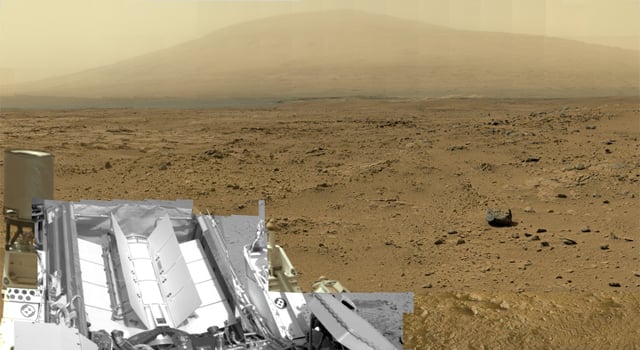This article is more than 1 year old
2013: A Space Odyssey - a cosmological review of the year
Asteroids 'n' comets, our new home Mars and the adventures of Jade Rabbit
Battams up: We found it! Oh, hang on...
Hopes were momentarily buoyed when astrophysicist Karl Battams posted on the NASA Comet ISON Observing Campaign's blog that something had been seen on the Solar and Heliospheric Observatory's Large Angle and Spectrometric Coronagraph (SOHO/LASCO) coming out the other side. Battams nicknamed the space rock "Schrödinger's Comet", because of the uncertainty around its demise. But it proved to be the dying gasp of the plucky ISON.
Battams posted a heartfelt, if maybe not entirely sincere, eulogy for the lost space rock, writing:
Never one to follow convention, ISON lived a dynamic and unpredictable life, alternating between periods of quiet reflection and violent outburst.
Tragically, on November 28, 2013, ISON's tenacious ambition outweighed its ability and our shining green candle in the solar wind began to burn out.
Mars is there, waiting to be reached

PICTURES OF THE YEAR: Curiosity stitches together a 1.3bn pixel panorama of Mars. Full story here and full size here.
Rich dudes and space experts are clearly tired of sitting around waiting for space agencies to get on with putting boots on the ground on Mars, so they're going to do it for themselves. Last year saw the launch of Mars One, the mission to populate the Red Planet with reality TV star.
This year, the world's first space tourist, millionaire Dennis Tito, kicked things off in February by teasing a "once-in-a-generation space journey". The hyped announcement happened later in the month, when Tito launched the Inspiration Mars foundation, looking for a man and a woman, preferably a couple, beyond child-bearing years to take off on a 501-day trip to the Red Planet in just five years time.
The elderly couple aspect takes care of a number of issues, Tito reckons, helping to stave off the psychological toll of such a journey with companionship and making it less of an issue that they're going to be irradiated by the trip. He said:
When you're out that far and the Earth is a tiny, blue pinpoint, you're going to need someone you can hug. What better solution to the psychological problems you're going to encounter with that isolation?
That radiation will do more than just upset the reproductive organs though, it could prove very unpleasant indeed without the proper shielding. Since adequate shielding means a hulking great massive ship that would be near-impossible to get off the ground, Tito's experts are hard at work at novel alternatives, including a shit-shield. Killing two birds with one stone, Inspiration Mars Foundation's chief tech officer Taber MacCallum suggested that one solution could be to use the couple's faeces, which after all, has to go somewhere, to shield them from radiation.
Even with a shit-shield in place, any mission to Mars is likely to significantly up the risk of cancer through radiation. NASA said in the middle of the year that according to its data, the space radiation encountered on the way to the Red Planet would add three per cent extra risk to the existing 20 to 25 per cent risk of fatal cancer, making it unacceptable.
But those kinds of statistics haven't put Tito off, he happily told the US House Subcommittee on Space all about the trip - and how he was hoping Uncle Sam might help pay for it:
If I may offer a frank word of caution to this subcommittee: The United States will carry out a Mars flyby mission, or we will watch as others do it – leaving us to applaud their skill and their daring. If America is ever going to do a flyby of Mars – a manned mission to another world – then 2018 is our last chance to be first.
The long odds also haven't put off the thousands of people who have applied for the chance to occupy the first Martian colony funded by a reality TV voting competition to pick occupants. Mars One, the mission to colonise the planet from 2022, said this summer that it had received over 100,000 video applications for the trip, despite the lack of information about how it's to be achieved.
The company has absolutely zero spacefaring experience so far, so it's sensibly decided to kick things off by attempting to send something, anything to Mars in the next three years. Co-founder Bas Lansdorp is on the lookout for anyone who wants to send stuff to the Red Planet so Mars One can use the opportunity to send "a small craft that will demonstrate the technologies needed for the human colony". He said:
If you have a reason to get something to Mars, get in touch with me.
It could be a country that wants to do an experiment on Martian soil… I know the UK space agency has been interested in getting to Mars in the past. They could put something on our lander and get a payload there.”
We also have consumer firms that are interested in becoming 'the first brand on Mars'.

